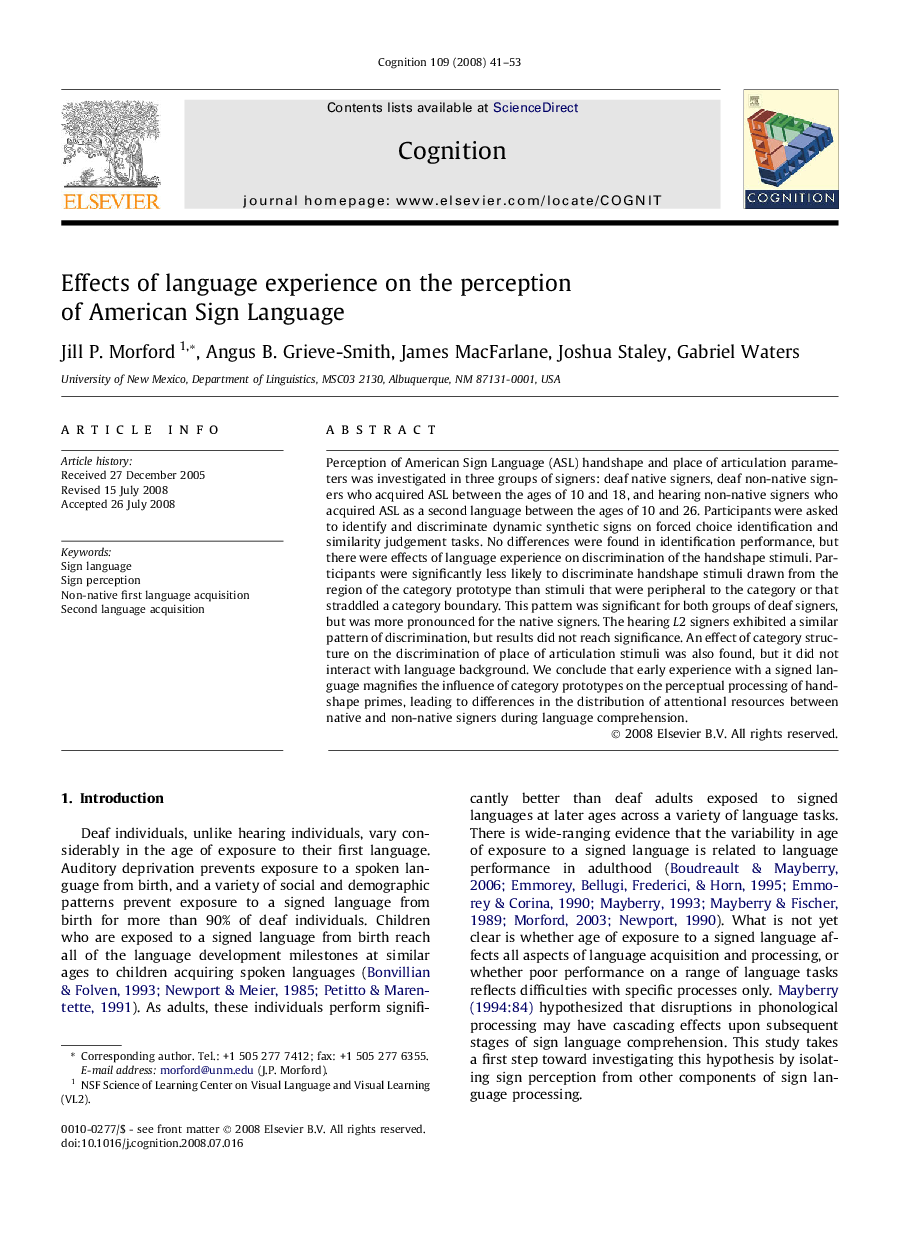| Article ID | Journal | Published Year | Pages | File Type |
|---|---|---|---|---|
| 10458029 | Cognition | 2008 | 13 Pages |
Abstract
Perception of American Sign Language (ASL) handshape and place of articulation parameters was investigated in three groups of signers: deaf native signers, deaf non-native signers who acquired ASL between the ages of 10 and 18, and hearing non-native signers who acquired ASL as a second language between the ages of 10 and 26. Participants were asked to identify and discriminate dynamic synthetic signs on forced choice identification and similarity judgement tasks. No differences were found in identification performance, but there were effects of language experience on discrimination of the handshape stimuli. Participants were significantly less likely to discriminate handshape stimuli drawn from the region of the category prototype than stimuli that were peripheral to the category or that straddled a category boundary. This pattern was significant for both groups of deaf signers, but was more pronounced for the native signers. The hearing L2 signers exhibited a similar pattern of discrimination, but results did not reach significance. An effect of category structure on the discrimination of place of articulation stimuli was also found, but it did not interact with language background. We conclude that early experience with a signed language magnifies the influence of category prototypes on the perceptual processing of handshape primes, leading to differences in the distribution of attentional resources between native and non-native signers during language comprehension.
Related Topics
Life Sciences
Neuroscience
Cognitive Neuroscience
Authors
Jill P. Morford, Angus B. Grieve-Smith, James MacFarlane, Joshua Staley, Gabriel Waters,
